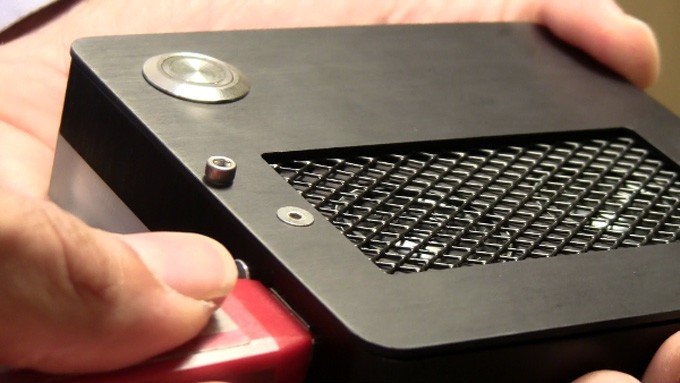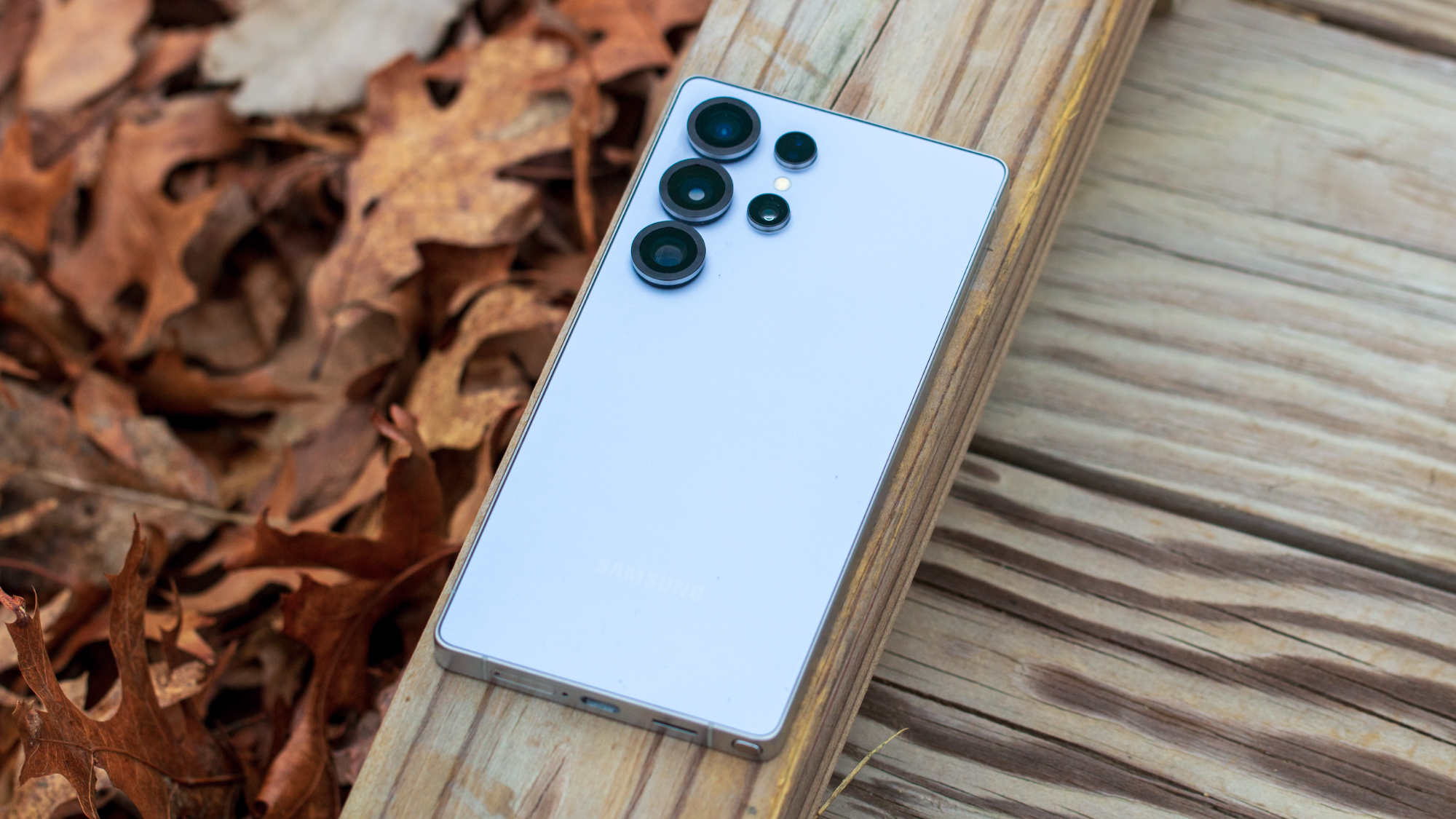Q&A with Ubi - figuring out how Android fits into the home

Ubi has recently reached their Kickstarter funding goal and are just about ready to begin putting their plug-in home computer into full production. This little Android-powered device sticks into a wall socket, connects to your home network over Wi-Fi, and is bristling with sensors. Combined with an Android app, you can get notifications relating to movement in the room, temperature, or issue commands directly to the device via voice. We wanted to follow up to talk about their challenges in making the project a success, the viability of Kickstarter as a funding model, and where Android fits in the larger scheme of home automation.
Hi Leor, thanks for your time! The Ubi looks really promising. Can you tell us a little bit about your inspiration for it?
All three of us (Amin, Mahyar, and myself) are big tech enthusiasts and subscribe to the philosophy that technology is starting to gain pace at such a tremendous rate that it’ll completely change how we live our lives. We were always throwing around ideas for different projects to work on, but around a year ago, we started to see some truly cool projects pop up on Kickstarter that inspired us.
One really neat project was called Twine and it was basically a device that could wirelessly stream all sorts of sensor data to the web and trigger events. That got us thinking about how it’s now getting much easier to create powerful devices that can be placed around the home. The next step we were thinking was to use this information to actuate things around us and change our environment.
We first started playing with all sorts of ideas for remotely actuating power outlets and we took that idea some distance. At some point in the project, it struck us that we could take this project much further and that the hardware that we were working with could be used to make something much bigger. We started realizing that this device we were creating could act like the Star Trek computer and the impact it could have excited us a lot.
The other thing is that we were always looking for some type of technology that would make life simpler. It seems that devices - iPhones, laptops, tablets, TVs - fight for our attention, so we wanted something that could allow us to disconnect from the distractions of technology but still allow us to have instant access to information. So that’s how the idea for the Ubi was born.
We imagined that someone could come home, put their cell and keys down, lay down on the sofa, and then if a quick thought popped up in that person’s head, they’d just ask the Ubi instead of having to get up to get their phone or open their laptop.
Get the latest news from Android Central, your trusted companion in the world of Android
Home automation is becoming huge, but there's a lot to cover. In the long run, how do you see Ubi, smartphones, and tablets fitting into the growing ecosystem of connected appliances? What are some of the barriers you're seeing for interoperability?
The issue until recently is that home automation has been about controlling lights and HVAC systems remotely or setting up timers for them. These systems were huge headaches to install and to program and they were ridiculously expensive. Even worse, they were really inflexible so only if your personal schedule followed exactly the same as the schedule you programmed into the system would everything work nicely. It’s kind of like putting a car in cruise control and expecting it to drive itself around corners.
So what we’re seeing now is that systems are coming down in cost and they’re moving from proprietary ways of communicating to open standards (Wi-Fi, Bluetooth, Insteon, etc.) and now everyone is able to develop their own devices on these standards. The biggest issue now is that we’re going to end up with all these appliances, lights, etc. that can be controlled remotely but no clear device that’s always connected to them and commanding them.
Tablets and smartphones are great because they can be used as remotes or for proximity sensing, letting systems know that you’re nearby, but we generally forget about them when we’re at home. Also, having to manually operate something, even remotely, doesn’t create an automated home.
Here’s where we see the Ubi coming in. The Ubi can act as a bridge between Bluetooth, RF and the Internet. That means that almost any device that can be triggered through RF or Bluetooth can be actuated remotely if it’s within range of an Ubi. It can also allow for voice actuation of appliances.
Also, since the Ubi has built in sensors (temperature, ambient light, air pressure, humidity, and microphone level), these can be used as triggers for actuating appliances, heating, etc. For example, you can have a space heater turn on if the temperature in a room drops below a threshold or have the lights turn on if there’s a loud noise at a certain time of day.
Tablets, smartphones, laptops, etc. will still be useful as inputs to set up these rules. Eventually, homes will learn to come up with these rules on their own based on our behavior.
Kickstarter has been a huge boon to indie entrepreneurs. How has your experience been funding for the project? Do you think Ubi could manage to get made through more traditional funding sources?
We’ve thrilled by the support we received for the Ubi. There’s a lot of excitement in finally revealing to the world what you’ve been working on and hearing people’s feedback. It’s surreal. Kickstarter is a great platform for safely putting up your project (or backing one) and getting feedback and it seems to have enough checks and balances in place to make the experience good for everyone.
I’m not sure if we’d be as successful if we went the traditional funding route. If we went that route, it’d mean spending a lot more time trying first to get private equity to develop the product and only then to test whether the market is actual ready for something like the Ubi. Also, getting private equity up front would mean having a boss to answer to and, while sometimes this is good, it could have really quashed our creativity or some of the more out-there ideas we have. Working that route might have delayed our project by a year or more.
With a model like Kickstarter, it reduces the amount of time that it takes to go from initial idea to a real product. The nice thing is that our backers become partners on the project. They put a lot of faith in us to deliver the Ubi but in the end they’ll get this device much sooner than if we funded it the old-fashion way.
For a long time, Android has been touted as an open platform that could be put into all sorts of devices, but we're only really starting to see anything other than phones and tablets now. What do you think have been some of the roadblocks to exploring new use cases for Android?
It’s not going to be long before Android becomes the next big internet thing like Arduino. Except now devices that run Android will be 15-20x more powerful than Arduino boards and these will have apps from Google Play. There’s soon going to be an explosion of Android-based devices (you can start to see the first trickling of this on Kickstarter with Instacube, Pocket TV, and the Ubi, of course).
The biggest obstacle now is hardware support. Since most of the work has been on supporting smartphones and tablets, there’s some catch up in being able to support devices that wouldn’t traditionally be used with a smartphone, like a USB keyboard.
From a manufacturing standpoint, Ubi seems fairly ambitious for a smaller company. Are you finding it challenging getting all of the parts together? How about assembly?
This is actually the easier part. It’s been fairly straightforward in finding reliable suppliers and manufacturing partners that can multiply our efforts. Our plan is to have the final assembly done closeby with a partner that is CE certified.
Most of the challenge now is on the software side, though hardware integration isn’t a picnic either. We want to make sure that the Ubi runs smoothly and is fully functional when we ship early next year.
Now that you've met your funding goal, what's next? How are you going to spend the surplus from Kickstarter?
We have a lot of work ahead of us in fulfilling Kickstarter orders so we’re going to be focusing exclusively on delivery over the next few months. We plan on putting as much as we can back into the development of the Ubi to give backers that much better of a product. Afterwards... well... let’s just say we think the Ubi is a small step towards radically improving our lives.
If you're interested in getting an Ubi, they'll be available between February and March next year for $199, or you can get in on the Kickstarter preorder for $189.



